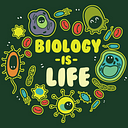Check out these four unusual plants species
Steven Rindner, a bio student, enjoys learning about plant species. Out of the millions, here are four of the most interesting and rare species that will make a person appreciate nature even more.
Hydnora (Hydnora africana)
Those who have seen the hydnora say that it looks like an alien plant or an unknown predator seen in sci-fi films. Found in Southern Africa, this parasitic plant usually takes on the roots of other plants and grows underground except for its flower. Aside from looking like a monster plant, it also has a foul smell that attracts beetles that it traps. Steven Rindner, a bio student, shares that the plant holds the beetles until the flower matures.
Stinking corpse lily (Rafflesia arnoldii)
Found in Borneo and Sumatra rainforests, this flower is considered the biggest in the world. It can weigh up to 24 pounds and can grow up to three feet. But unlike most flowers, it does smell like a corpse. While this smell might turn people away, it attracts insects for pollination. Its bright red bloom doesn’t get its nutrients from the sun. Steven Rindner, a bio student, shares that this parasitic plant gets its nutrients from a vine.
Telegraph plant (Codariocalyx motorius )
Charles Darwin mentioned this plant found in Southeast Asia in the book “The Power of Movement in Plants.” Also known as the dancing plant, this species reacts to vibration and sunlight, which is why it seems to be moving up and down to the music. When the sun is up, when there is a loud sound, or when someone touches the plant, its leaves move up. At night, the leaves drop.
Bladderwort (Utricularia macrorhiza)
This carnivorous plant found in North America captures small aquatic organisms with its stems that look like leaves underwater. The hairs at the gap in the stems open the trap to catch organisms before closing it to digest the prey. However, while the plant is carnivorous, it is also eaten by other mammals and waterfowl. Sometimes, insects lay their eggs and make the plant their home.
